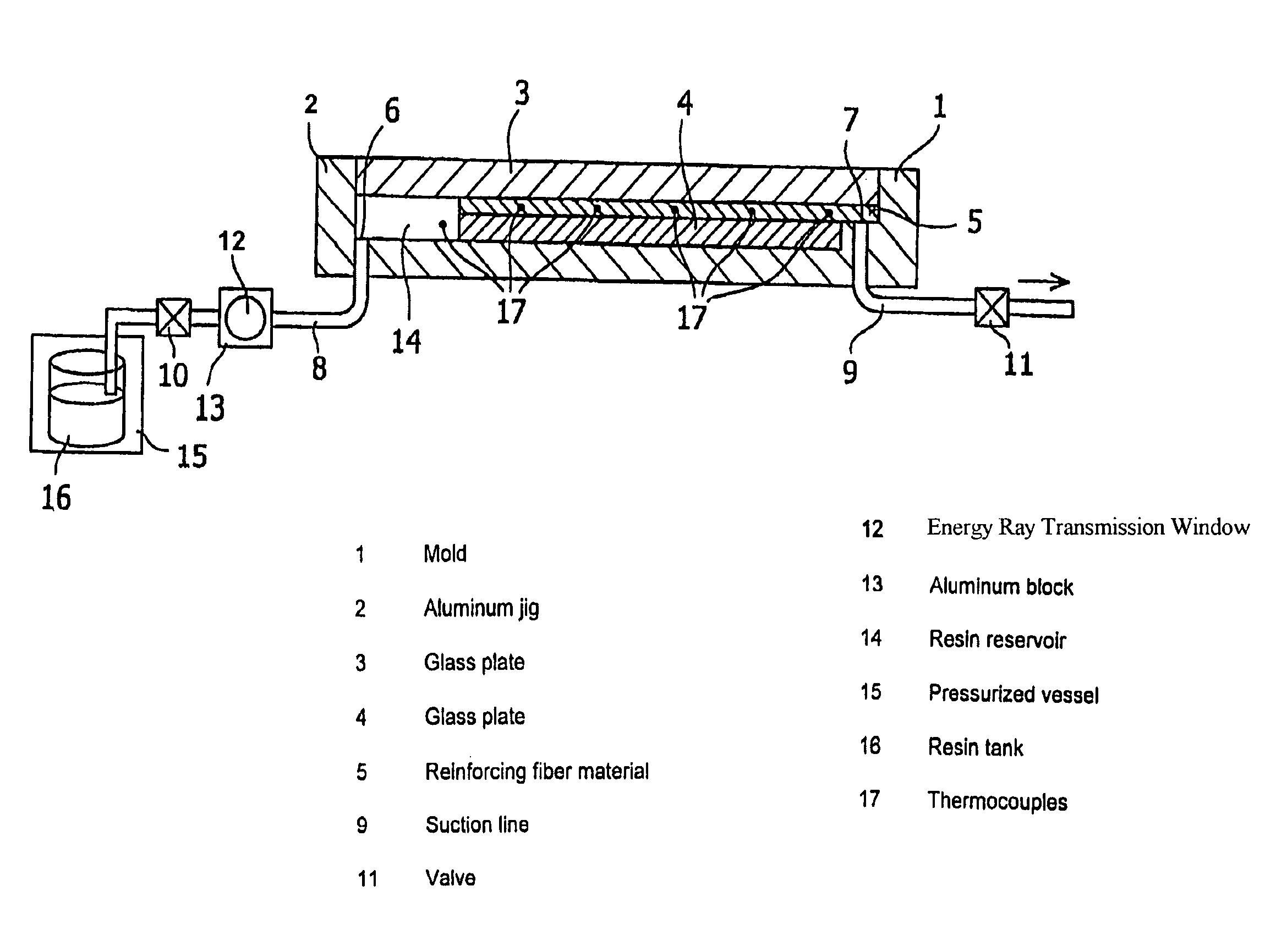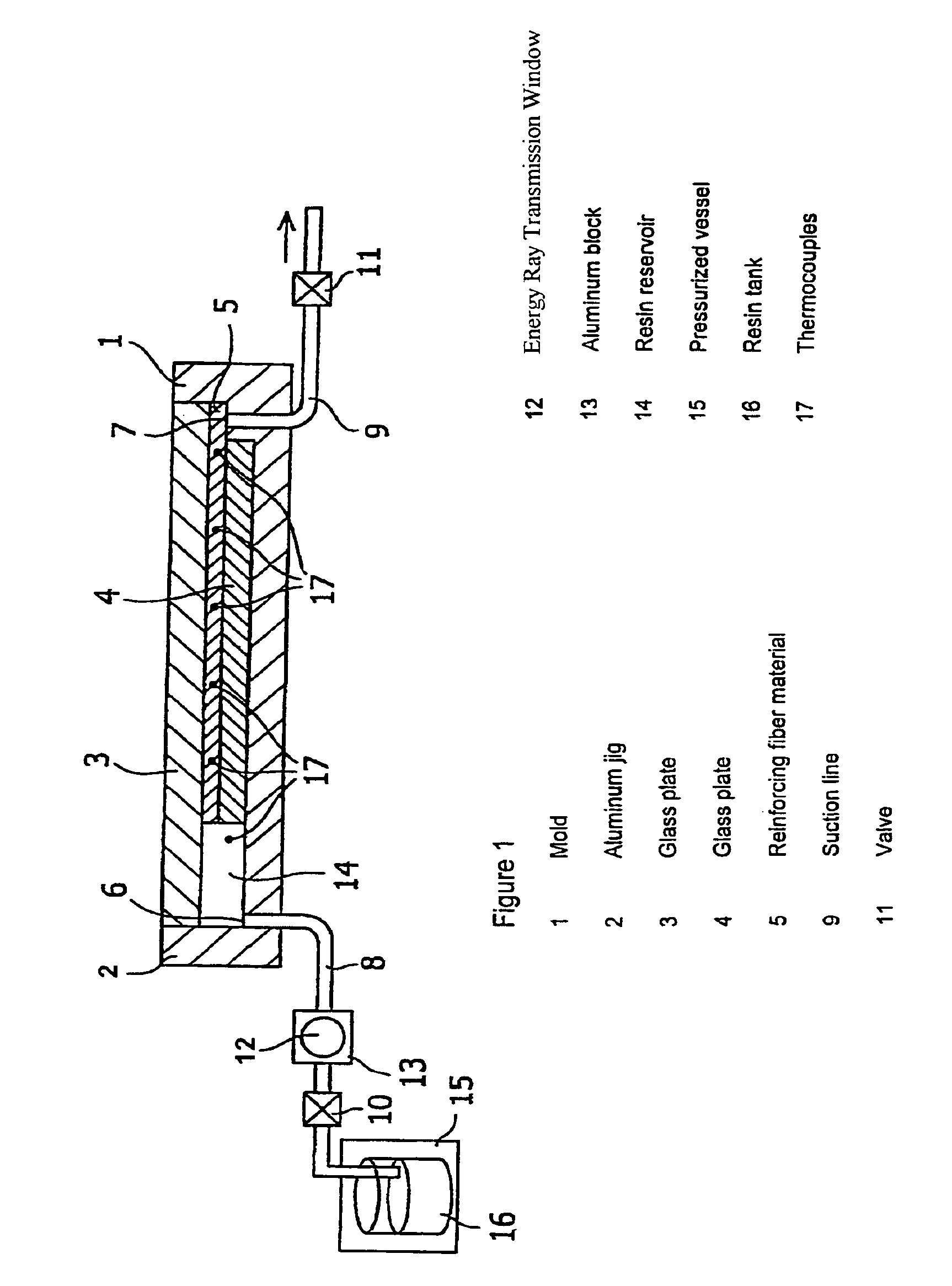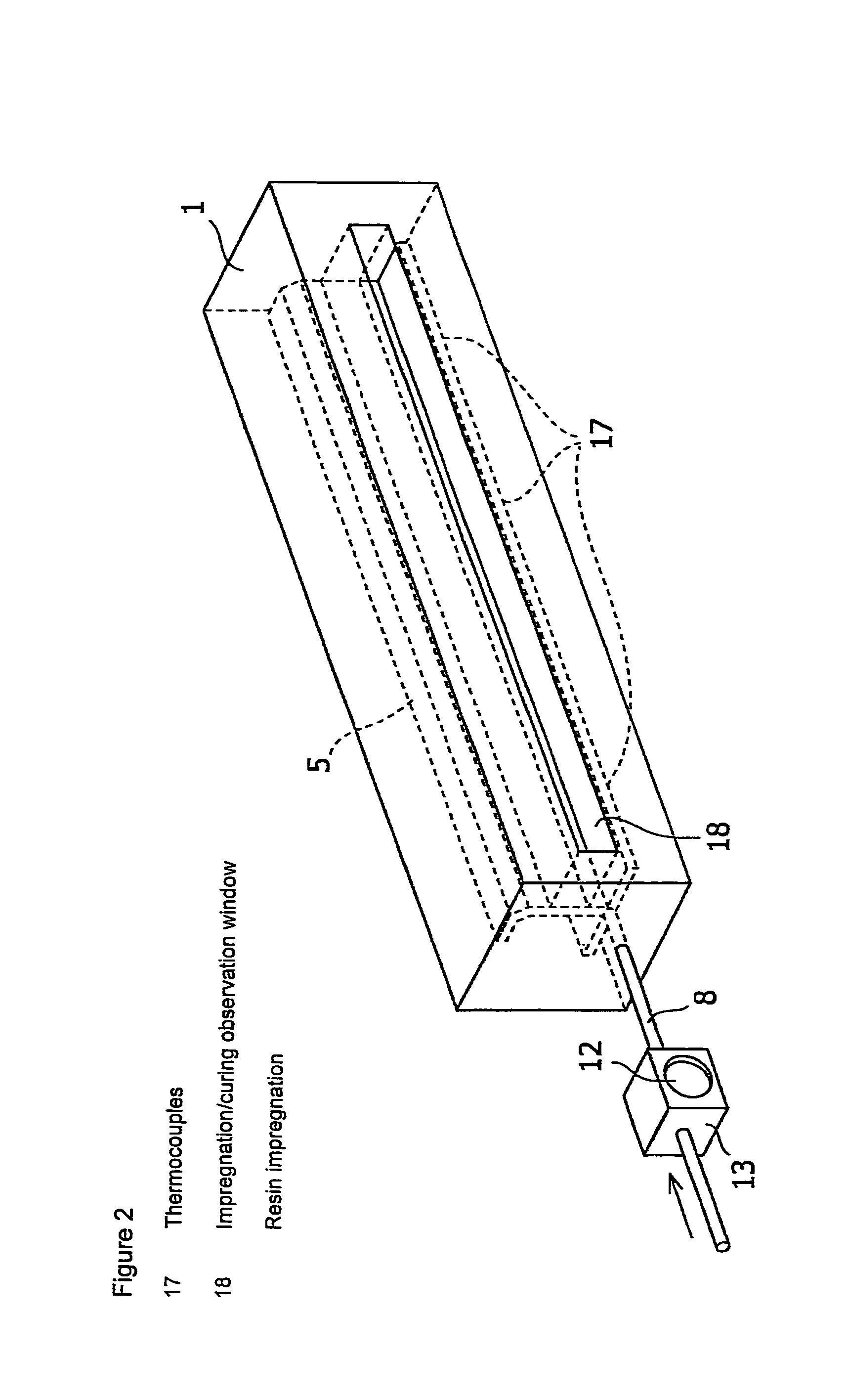RTM molding method
a technology of transfer molding and resin, which is applied in the field of resin transfer molding, can solve the problems of incurable resins, thick wall curing and curing with contained fillers that have not been solved, and the application range of light-curable resins is limited, and achieves excellent strength and lightness, and increases fiber volume conten
- Summary
- Abstract
- Description
- Claims
- Application Information
AI Technical Summary
Benefits of technology
Problems solved by technology
Method used
Image
Examples
Embodiment Construction
[0023]Hereinafter, an RTM molding method according to the present invention will be described in more detail with reference to the embodiments of the method.
[0024]FIG. 1 shows an embodiment of a molding apparatus used for an RTM molding method according to the present invention.
[0025]FIG. 1 is a sectional view, wherein a mold 1 serving as a base is equipped with an aluminum jig 2 and upper and lower glass plates 3 and 4. As shown in the figure, in the mold 1, a flat platy reinforcing fiber material 5 is sandwiched between the glass plates 3 and 4. The reinforcing fiber material 5 is made of, for example, a laminate formed with a fabric made of the reinforcing fiber. The plates 3 and 4 are glass plates from the viewpoint of the heat-retaining property. It is to be noted that the mold 1 as a whole is preferably constructed so as to be high in heat-retaining property. This is for the purpose of promoting the below-described chain curing of the resin.
[0026]As presented in the sectional ...
PUM
| Property | Measurement | Unit |
|---|---|---|
| temperature | aaaaa | aaaaa |
| temperature | aaaaa | aaaaa |
| temperature | aaaaa | aaaaa |
Abstract
Description
Claims
Application Information
 Login to View More
Login to View More - R&D
- Intellectual Property
- Life Sciences
- Materials
- Tech Scout
- Unparalleled Data Quality
- Higher Quality Content
- 60% Fewer Hallucinations
Browse by: Latest US Patents, China's latest patents, Technical Efficacy Thesaurus, Application Domain, Technology Topic, Popular Technical Reports.
© 2025 PatSnap. All rights reserved.Legal|Privacy policy|Modern Slavery Act Transparency Statement|Sitemap|About US| Contact US: help@patsnap.com



